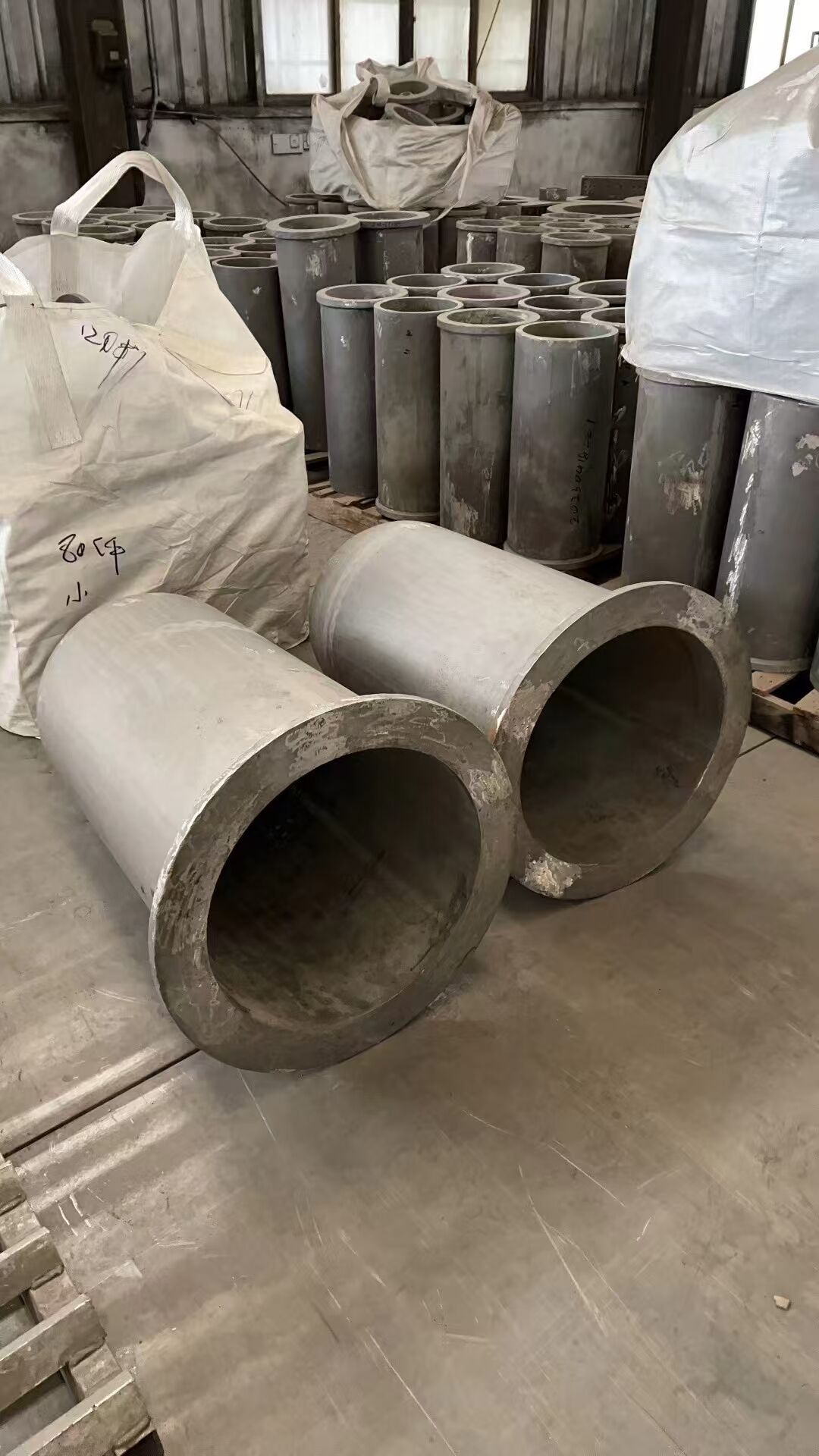Introduction: The Unsung Hero of Metal Casting
In the dramatic process of metal casting, where molten metal flows and takes shape, one humble component stands as the literal container of transformation—the crucible. Often overlooked in favor of more visible elements like molds and furnaces, the crucible is in fact the critical link between solid raw materials and finished cast components. From ancient bronze artifacts to modern jet engine components, every cast metal part begins its journey in a crucible.
This essential tool has evolved far beyond simple clay pots. Today's crucibles are engineered marvels, designed to withstand extreme thermal and chemical challenges while maintaining precision and reliability. Understanding the crucible's role, selection, and maintenance is fundamental to achieving success in any metal casting operation, from small jewelry workshops to massive industrial foundries.
1. The Fundamental Role of Crucibles in Metal Casting
1.1. More Than Just a Container
A crucible serves multiple critical functions beyond simply holding molten metal:
Thermal Management:
Efficiently transfers heat from furnace to charge
Maintains temperature consistency throughout the melting process
Withstands rapid temperature changes during charging and pouring
Chemical Integrity:
Provides a barrier between molten metal and furnace atmosphere
Resists chemical attack from aggressive alloys and fluxes
Prevents contamination that could compromise final material properties
Process Safety:
Contains extremely hazardous molten materials
Withstands mechanical stress during handling and pouring
Provides reliable performance under thermal cycling conditions
1.2. The Crucible's Journey Through History
The development of crucible technology parallels human technological advancement:
Ancient Origins (3000 BC):
Clay and ceramic vessels for copper and bronze
Primitive but effective for early metalworking
Limited temperature capability and service life
Industrial Revolution (18th-19th Century):
Graphite crucibles for higher temperature alloys
Mass production enabling larger-scale casting operations
Improved durability and thermal performance
Modern Era (20th-21st Century):
Advanced ceramics and composite materials
Engineered for specific metals and processes
Integration with automated handling systems
2. Comprehensive Guide to Crucible Types and Materials
Selecting the right crucible requires understanding material compatibility and performance characteristics.
2.1. Clay-Graphite Crucibles
Composition: Natural graphite and clay binders
Temperature Range: Up to 1600°C
Optimal Applications:
Aluminum and aluminum alloys
Copper and copper alloys
Precious metals
Zinc and lead alloys
Advantages:
Excellent thermal shock resistance
Good thermal conductivity
Cost-effective for non-ferrous applications
Relatively easy to repair minor damage
Limitations:
Not suitable for ferrous metals
Limited chemical resistance to certain fluxes
Moderate service life in aggressive environments
2.2. Silicon Carbide Crucibles
Composition: Silicon carbide with clay or silicon nitride bonds
Temperature Range: Up to 1600°C
Optimal Applications:
Iron and steel
High-temperature copper alloys
Nickel-based alloys
Aggressive flux environments
Advantages:
Superior mechanical strength
Excellent abrasion resistance
Good thermal conductivity
Long service life in appropriate applications
Limitations:
Higher initial cost
More susceptible to thermal shock
Can react with certain highly basic slags
2.3. Ceramic Crucibles
Composition: High-purity alumina, zirconia, or magnesia
Temperature Range: 1700°C to 2000°C+
Optimal Applications:
Superalloys and reactive metals
Laboratory and research applications
High-purity material processing
Vacuum melting applications
Advantages:
Exceptional chemical purity
Resistance to extreme temperatures
Compatibility with reactive metals
Minimal contamination risk
Limitations:
Poor thermal shock resistance
High cost
Brittle and prone to mechanical damage
Lower thermal conductivity
2.4. Modern Composite Crucibles
Composition: Engineered combinations of ceramics, graphite, and reinforcements
Temperature Range: Varies by formulation (typically 1500-1800°C)
Optimal Applications:
Precision investment casting
Automated production lines
Specialized alloy development
High-value component manufacturing
Advantages:
Tailored thermal and mechanical properties
Optimized for specific manufacturing processes
Enhanced durability and service life
Consistent performance characteristics
Limitations:
Highest cost category
Limited availability for some specialized types
Requires precise operating parameters
3. Strategic Crucible Selection Criteria
Choosing the right crucible involves balancing multiple technical and economic factors.
3.1. Metal Compatibility Matrix
Different metals present unique challenges for crucible materials:
Aluminum and Aluminum Alloys:
Recommended: Clay-graphite, silicon carbide
Considerations: Aluminum's low density requires careful flux selection
Temperature range: 660-800°C
Copper and Copper Alloys:
Recommended: Clay-graphite, silicon carbide
Considerations: High zinc content in brass requires controlled atmosphere
Temperature range: 1080-1200°C
Iron and Steel:
Recommended: Silicon carbide, high-alumina ceramics
Considerations: High temperature and basic slag conditions
Temperature range: 1530-1650°C
Nickel-Based Superalloys:
Recommended: High-purity alumina, zirconia
Considerations: Extreme temperature and reactive elements
Temperature range: 1400-1600°C
3.2. Process-Specific Considerations
Frequency of Use:
Continuous operation: Dense silicon carbide or composites
Intermittent use: Thermal shock-resistant clay-graphite
Single-use: Cost-effective basic ceramics
Heating Method:
Gas furnaces: Good thermal shock resistance critical
Electric resistance: More stable thermal conditions
Induction: Conductive materials (graphite) required
Handling Requirements:
Manual pouring: Lightweight designs with good handling features
Mechanical handling: Robust construction for automated systems
Tilting furnaces: Special reinforced designs
4. Advanced Crucible Management and Maintenance
Proper crucible care significantly impacts performance, safety, and cost-effectiveness.
4.1. Installation and Commissioning Best Practices
Proper Seating and Alignment:
Ensure clean, level furnace bottom
Use appropriate packing materials
Verify clearance for thermal expansion
Check alignment with pouring mechanisms
Initial Heating Protocol:
Follow manufacturer's recommended heating curve
Typical rate: 100-150°C per hour to 800°C
Hold at intermediate temperatures to ensure complete drying
Avoid rapid temperature changes during first heat-up
First Melt Considerations:
Begin with smaller charges
Use cleaner scrap or virgin material
Monitor for any unusual behavior or emissions
Document performance characteristics
4.2. Operational Best Practices
Charging Procedures:
Pre-heat charge materials when possible
Avoid impact damage during charging
Maintain proper charge sequence
Prevent bridging or uneven melting
Temperature Management:
Use calibrated temperature measurement
Avoid excessive superheating
Maintain consistent operating temperatures
Monitor furnace atmosphere conditions
Flux and Slag Management:
Use compatible fluxes in appropriate quantities
Remove slag regularly to prevent buildup
Avoid aggressive chemical cleaning
Monitor crucible wall thickness regularly
4.3. Maintenance and Inspection Protocols
Daily Inspection Checklist:
Visual examination for cracks or damage
Check for slag buildup or metal penetration
Verify proper positioning in furnace
Monitor for any operational changes
Periodic Maintenance:
Measure wall thickness and document trends
Check for erosion in critical areas
Inspect for chemical attack or corrosion
Validate thermal performance
End-of-Life Criteria:
Minimum safe wall thickness (typically 40-50% of new)
Visible cracks or structural damage
Significant metal leakage or penetration
Deteriorated thermal performance
5. Modern Applications and Technological Advancements
Crucible technology continues to evolve to meet the demands of advanced manufacturing processes.
5.1. Investment Casting Applications
Automated Production Lines:
High-durability crucibles for continuous operation
Precision-designed for robotic handling systems
Optimized thermal characteristics for specific alloys
Enhanced safety features for high-volume production
Vacuum and Controlled Atmosphere Melting:
Specialized materials for reduced pressure environments
Low-outgassing compositions
Enhanced purity for aerospace and medical applications
Custom designs for specific furnace configurations
5.2. Additive Manufacturing and Rapid Prototyping
Small-Batch Alloy Development:
Miniature crucibles for experimental quantities
Rapid changeover capabilities
Compatibility with diverse material systems
Precision temperature control features
Specialized Material Processing:
Ultra-high temperature capabilities
Resistance to reactive elements
Custom geometries for research applications
Integration with advanced monitoring systems
5.3. Emerging Technologies and Future Trends
Smart Crucible Systems:
Integrated temperature and condition monitoring
Wireless data transmission for process control
Predictive maintenance capabilities
Real-time performance optimization
Advanced Material Development:
Nanocomposite materials for enhanced performance
Self-healing ceramic formulations
Gradient materials for optimized thermal management
Environmentally sustainable compositions
Automation Integration:
Standardized interfaces for robotic handling
Quick-change mounting systems
Automated cleaning and preparation
Integrated safety monitoring
6. Economic Considerations and Total Cost of Ownership
Smart crucible management involves looking beyond initial purchase price to total operational costs.
6.1. Cost Analysis Framework
Direct Costs:
Crucible purchase price
Installation and commissioning
Removal and disposal
Cleaning and maintenance materials
Indirect Costs:
Production downtime for changes
Energy consumption differences
Metal loss due to oxidation or contamination
Quality issues from crucible failure
Risk Costs:
Safety incidents from crucible failure
Production losses from unexpected failures
Equipment damage from metal breakouts
Environmental cleanup costs
6.2. Optimization Strategies
Inventory Management:
Maintain appropriate spare inventory levels
Standardize crucible types where possible
Implement first-in-first-out rotation
Monitor supplier lead times and reliability
Performance Tracking:
Document service life for each crucible
Track performance by metal type and process
Monitor cost per kilogram of metal melted
Analyze failure modes and trends
Supplier Partnership:
Develop relationships with quality manufacturers
Participate in technical training programs
Share performance data for continuous improvement
Collaborate on custom solutions for specific challenges
Conclusion: The Foundation of Casting Excellence
The crucible remains one of the most fundamental yet sophisticated components in metal casting. Its proper selection, use, and maintenance directly impact every aspect of casting operations—from safety and efficiency to final product quality and cost-effectiveness.
Modern manufacturing demands have transformed the humble crucible from a simple container to an engineered system component. Success in today's competitive casting environment requires understanding these advancements and implementing best practices for crucible management.
The foundries that excel recognize that crucible performance is not just about containing molten metal—it's about enabling process consistency, material integrity, and manufacturing excellence. By treating crucible selection and maintenance as a strategic priority rather than a routine purchasing decision, manufacturers can achieve new levels of performance, reliability, and profitability in their casting operations.
As casting technologies continue to advance, the crucible will undoubtedly evolve alongside them, continuing its essential role as the starting point for transforming raw materials into engineered components that shape our world.
Table of Contents
- Introduction: The Unsung Hero of Metal Casting
- 1. The Fundamental Role of Crucibles in Metal Casting
- 2. Comprehensive Guide to Crucible Types and Materials
- 3. Strategic Crucible Selection Criteria
- 4. Advanced Crucible Management and Maintenance
- 5. Modern Applications and Technological Advancements
- 6. Economic Considerations and Total Cost of Ownership
- Conclusion: The Foundation of Casting Excellence


